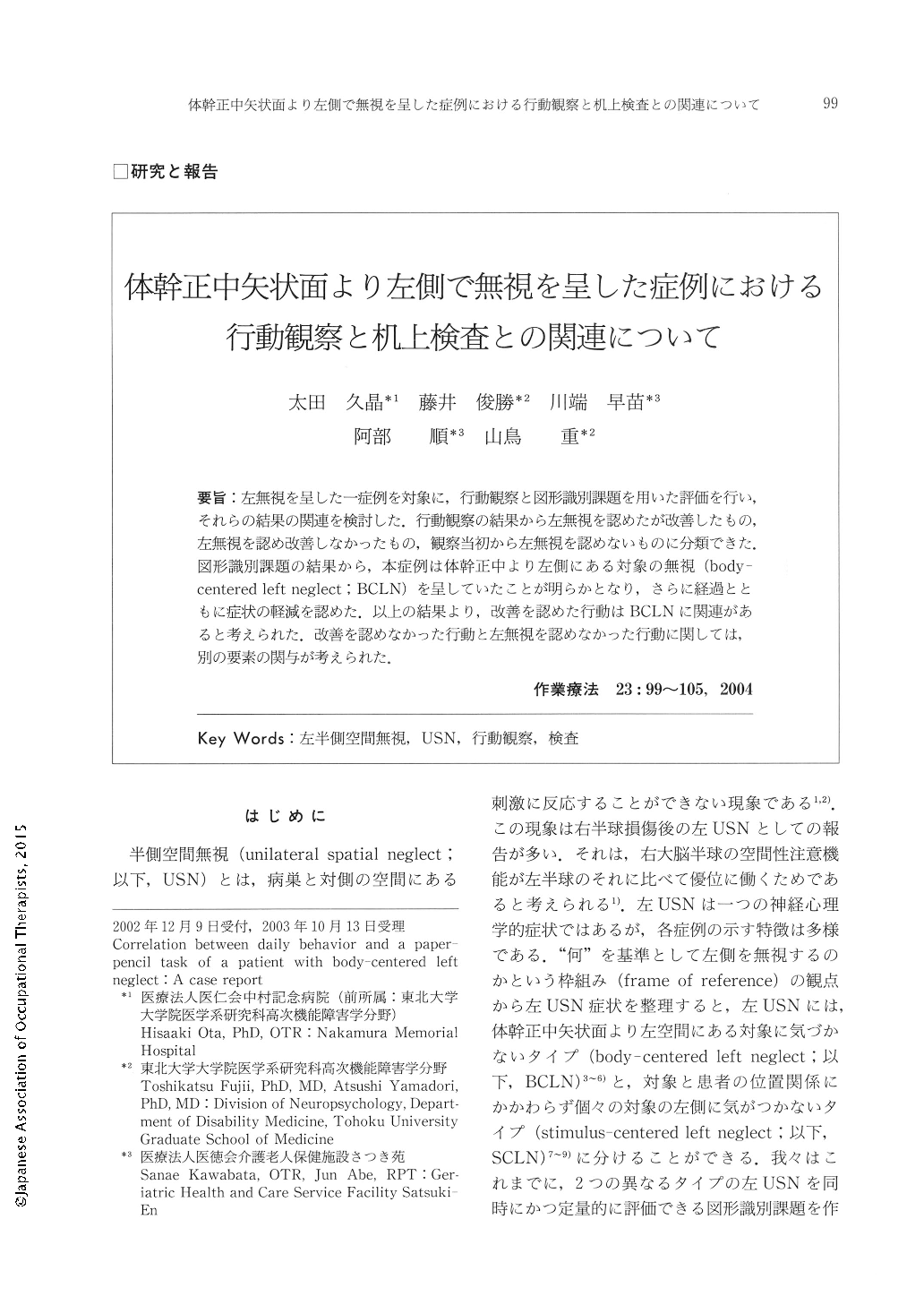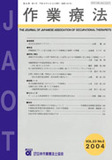Japanese
English
- 販売していません
- Abstract 文献概要
- 1ページ目 Look Inside
- 参考文献 Reference
- サイト内被引用 Cited by
要旨:左無視を呈した一症例を対象に,行動観察と図形識別課題を用いた評価を行い,それらの結果の関連を検討した.行動観察の結果から左無視を認めたが改善したもの,左無視を認め改善しなかったもの,観察当初から左無視を認めないものに分類できた.図形識別課題の結果から,本症例は体幹正中より左側にある対象の無視(body-centered left neglect;BCLN)を呈していたことが明らかとなり,さらに経過とともに症状の軽減を認めた.以上の結果より,改善を認めた行動はBCLNに関連があると考えられた.改善を認めなかった行動と左無視を認めなかった行動に関しては,別の要素の関与が考えられた.
According to the frame of reference theory, there are two different types of left unilateral spatial neglect (USN) : body-centered left neglect (BCLN) and stimulus-centered left neglect (SCLN). To differentiate these two types of neglect, we developed a figure discrimination task. Although there are some reports that discuss correlation between results from paper-pencil tasks and those from ADL evaluation for patients with left USN, no study reports the relationship between daily behavior and results of paper-pencil tasks in terms of BCLN and SCLN. We herein report relationships between results from an observation of daily life and those from the figure discrimination task in a patient with left USN.
One patient was an 86-year-old woman, who developed right cerebral infarction. She showed left hemiparesis and disturbance of touch, manifesting in deep left-side sensations. She showed left USN on a line bisection task and a circle cancellation task.
To evaluate whether she showed left USN in daily behavior, two occupational therapists and one physical therapist, who were in charge of her case, observed her daily activities. To assess whether she showed BCLN and/or SCLN, we used the figure discrimination task.
The therapists gave her personal exercises twice or three times a week, including sitting without backrest, transfer, and standing. She also participated in a group exercise. Based on results obtained from the observation, we found three kinds of USN related behavior : one with left USN, which improved, one with left USN, which did not improve, and one without left USN. On the figure discrimination task, our patient showed only BCLN, which improved over time.
These results suggested that the improved behavior was related to BCLN, but the other behaviors were less related to BCLN and were affected by other factors.

Copyright © 2004, Japanese Association of Occupational Therapists. All rights reserved.


